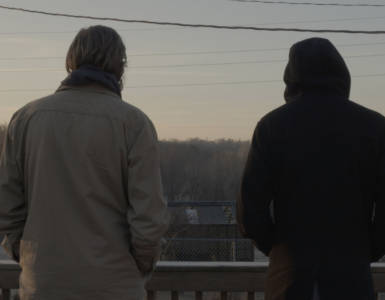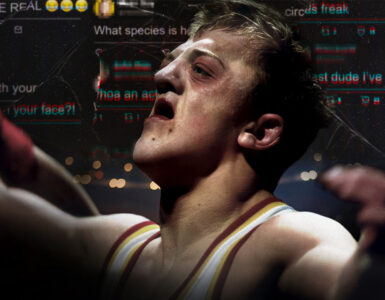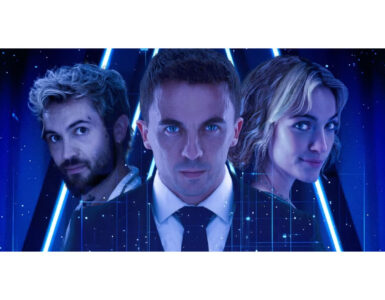In this in-depth interview with filmmaker Drago Sumonja, the first time filmmaker explains how his ‘talking heads’ documentary zones in on the craft of acting.
Interview by Deborah Klugman
Shot in uncompromising black and white, filmmaker Drago Sumonja’s documentary char- ac- ter intercuts interviews with six renowned actors, two of whom are directors, as they discuss their careers and their craft. The project initiated out of Sumonja’s conversations with Dabney Coleman, whom he met in 2000 at the storied West Hollywood restaurant, Dan Tana’s. Sumonja and Coleman became friends; over time Coleman often talked about his experiences as an actor, and about five people he knew well: Peter Falk, Charles Grodin, Sydney Pollack, Harry Dean Stanton and Mark Rydell. Sumonja had toyed with the idea of filming interviews about acting as far back as his undergraduate years at Cal Arts in Valencia. He proposed to Coleman that they work together to make a documentary. After some “convincing,” Coleman agreed.
Sumonja shot his barebones footage with a first generation Panasonic DVX and a boom but, significantly, no lighting. In the film Coleman, off-camera. interviews the others, while his own recollections are relayed while conducting a nostalgic tour of the celebrated Neighborhood Playhouse in New York City where he received his training.
One of the documentary’s more intriguing aspects is the contrasts it presents among the interviewees. Whereas Coleman esteemed his mentors, Grodin (who did not attend the Playhouse, it should be noted) dismisses most classes he took as so much hooey. while Pollack, an actor and Neighborhood Playhouse instructor who segued into directing, offers analytical commentary, others, like Falk and Stanton, more simply just tell their story.
How long did it take you to put it together?
A couple of years. Getting it together to interview the guys took about 7 months. When I first started I had never done any editing. I bought a system. A friend showed me how to use it. I went through 14 full feature length cuts. That took a while. I basically took things from each guy that resonated with me, in no particular order. And then I watched and took notes, and then it was about rearranging. But this is what I most proud of: I had a lot of people tell me that I needed stock footage. I didn’t want that. My goal the entire time was: How can I make a feature length documentary with just talking heads? How can I make that interesting for an hour and a half?
Is there a reason you shot the film in black and white?
I always had that notion. I was inspired a lot by Cassavetes. No question, Cassavetes is an inspiration to every independent film maker. I was really influenced by the Maysles brothers. They made a documentary called Meet Marlon Brando. And I was also inspired by another documentary – Directed by John Ford. It was directed by Peter Bogdanovich. Basically the same format – an interview of 4,5,6 guys.
My understanding is that you interviewed a lot of other guys in addition to these six.
Yeah, well, it took a while to get all six of these guys interviewed. So in the meantime I thought I’m going to try to contact some of the actors that I grew up watching. I cold-called their managers and introduced myself and I said, “I’m making a documentary about acting, and I want to interview your clients. I got questions: “Who are you, what studio are you with, send us a list of people who’ve already committed.” So I sent them a list. I had 3 or 4 by then, I had Dabney, I had Harry, I had Mark Rydell… By the time I had 5 or 6, including Sydney Pollack, it was no problem. So yeah, I interviewed 47 other guys. I interviewed many great people.
For me one of the film’s highlights of the film was when Pollack talked about actors having the opportunity to live other lives through their art. What resonated for you?
When Pollack talked about actors being dissatisfied and neurotic. I think that stood out to me, that spoke to me, that hit me at a strong level at that time. The other thing was Dabney talking about how going to school was an incredible experience. The people that you meet and the friends that you stay in touch with. That resonates the most with me. I wish I could do it again.
Did Pollack ever see the footage?
No.
So it was really a seminal event, your interview with him.
Yeah, but I had no idea [he had cancer].. I put together a cut of the interview and Dabney gave it to him and he said he’d watch it but he never felt good and he never watched it. He passed away. And then, 7 or 8 months before his wife Clare passed away she watched it She said Sydney would have been proud. She said, ‘ Sydney had so many interviews. I don’t know what you did, but no one’s ever caught Sydney like that.’ And Dabney said that too – ‘I’ve never heard him talk like that, all over the place, so loose.’
How would you sum up?
Life is unfathomable to me. I am very moved. I am very flattered that they were all so very candid, that a kid growing up in San Diego – with no connections, his parents weren’t in the arts- that I could be sitting this close to Sydney Pollack – as close as we are now – in his office, with Dabney Coleman.
I really think it’s an important film that actors should see. There are actors walking around this town, people calling themselves actors, and they have no idea who Sydney Pollack is. They don’t even know who Marlon Brando is. If you want to be an actor, or a painter, or a journalist, or whatever… you don’t have to know everybody and everything, but wouldn’t one read about history…? I think they don’t care about anything but, “I just want to be famous. If I can’t be on TV., or be in a movie, I’ll make it in a reality TV show.”
char-ac-ter premieres across all VOD platforms November 27. It opens for a one week run at the Arena Cinema, 1625 Las Palmas Ave. Hollywood (behind the Egyptian Theater) on November 30.
(323) 306‐0676







